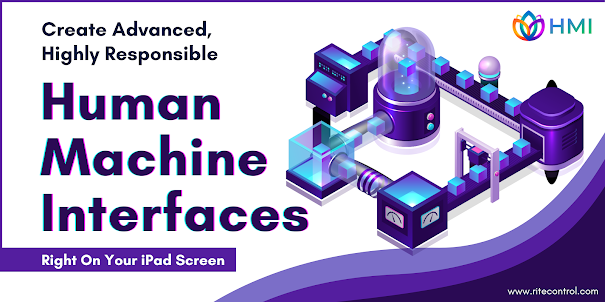Understanding the PLC HMI Programming Process to Optimize Industrial Efficiency
In the intricate dance of industrial automation, the collaboration between Programmable Logic Controllers (PLCs) and Human-Machine Interfaces (HMIs) is pivotal, steering the course toward unprecedented efficiency. The process of PLC HMI programming emerges as the linchpin, blending meticulous coding and intuitive design to orchestrate seamless operations. In this exploration, we delve into the nuanced layers of the PLC HMI programming process, unraveling the intricacies that propel industrial efficiency to new heights.
Decoding the Essence of PLC HMI Programming:
At the heart of industrial automation, PLC HMI programming is the key to translating complex algorithms into a user-friendly interface. Programmable Logic Controllers serve as the operational brain, executing pre-programmed tasks, managing inputs and outputs, and ensuring the synchronized orchestration of machinery. Simultaneously, the Human-Machine Interface provides the avenue for human operators to monitor, control, and interact with the industrial processes governed by the PLC.
The Synergy of Functionality and User-Centric Design:
Efficient PLC HMI programming hinges on achieving a harmonious balance between multifaceted functionality and user-centric design. A well-crafted interface not only visualizes critical data but also empowers operators to input commands, set parameters, and respond adeptly to real-time changes in the industrial environment. This fusion of functionality and design minimizes downtime, enhances operational efficiency, and ensures a seamless human-machine interaction.
Realizing Operational Fluidity through Integration:
One of the primary advantages of PLC HMI programming is the realization of operational fluidity. The seamless integration of these systems enables real-time monitoring and control, facilitating swift responses to dynamic functional shifts. This not only mitigates downtime but also elevates the overall efficiency and reliability of industrial processes, fostering a responsive and agile industrial ecosystem.
Customization for Industry-specific Precision:
PLC HMI programming is not a one-size-fits-all solution. Industries harbor unique operational requisites, and practical programming allows for customization to meet these specific needs. Whether navigating the intricacies of the manufacturing sector, the energy industry, or any other domain, tailor-made PLC HMI solutions ensure optimal performance aligned with industry standards.
Remote Accessibility for Enhanced Management:
In the era of Industry 4.0, connectivity is paramount, and PLC HMI programming stands at the forefront of this revolution. Leading-edge systems, including those developed by innovative companies such as Rite Control LLC, feature remote accessibility. This capability empowers operators to monitor and control processes from any location, providing unprecedented flexibility and operational management capabilities.
Troubleshooting and Maintenance Simplified:
A distinctive facet of PLC HMI programming is its contribution to proactive maintenance through advanced diagnostic tools. These tools enable the early detection of faults and anomalies, allowing for timely intervention. The result is reduced downtime, minimized maintenance costs, and a significant contribution to the overall cost-effectiveness of industrial operations.
The Trajectory of Automation:
As technology continues to advance, the trajectory of PLC HMI programming points towards a future of limitless potential. The infusion of artificial intelligence, machine learning, and predictive analytics into PLC HMI systems is becoming increasingly prevalent, paving the way for predictive maintenance and enhanced decision-making capabilities.
Optimizing the PLC HMI Programming Process:
To optimize the PLC HMI programming process, it is crucial to adhere to best practices. This includes thorough system analysis, collaborative design processes involving both engineers and end-users, and rigorous testing procedures. Additionally, staying abreast of technological advancements and incorporating the latest innovations ensures that PLC HMI systems remain at the cutting edge of efficiency and functionality.
Conclusion:
In the dynamic realm of PLC HMI programming, one company stands out as a beacon of innovation and reliability - Rite Control LLC. With a profound understanding of industry-specific needs, Rite Control LLC has crafted cutting-edge PLC HMI solutions that redefine efficiency in industrial automation. Their commitment to user experience, adherence to industry standards, and forward-thinking approach to technology position Rite Control LLC as a leader in the field of PLC HMI programming. Embrace the evolution of automation with Rite Control LLC, where precision converges with innovation to forge an epoch of unparalleled industrial efficiency. Download the app today to experience the future of industrial automation firsthand.

.png)


Comments
Post a Comment